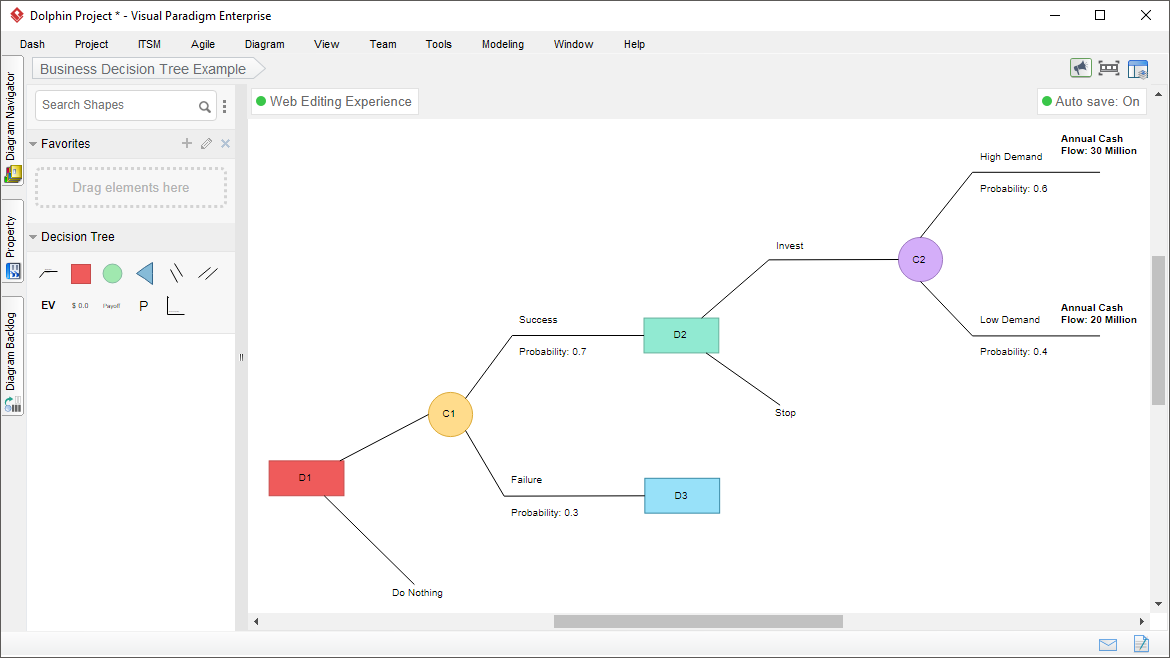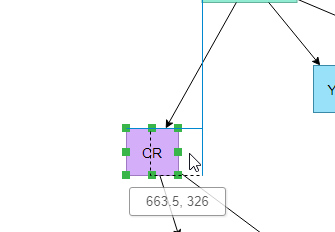The easiest and most powerful decision tree tool

To create decision tree is simple and straight forward using Visual Paradigm. The decision tree tool features an intuitive drag-and-drop editor and a rich collection of decision tree shapes for you to visualize your case quickly. You can also share your work through the built-in team collaboration support.


Cut down hours of time with drag-and-drop shape creation, alignment guide, re-usability support, quick formatting tools and more.

Apply different colors and fonts to branches and nodes. Adjust the routing of connectors with drag and drop. A rich set of formatting options are provided.

Vast export options that facilitates sharing and communication: JPG, PNG, SVG, PDF, etc.